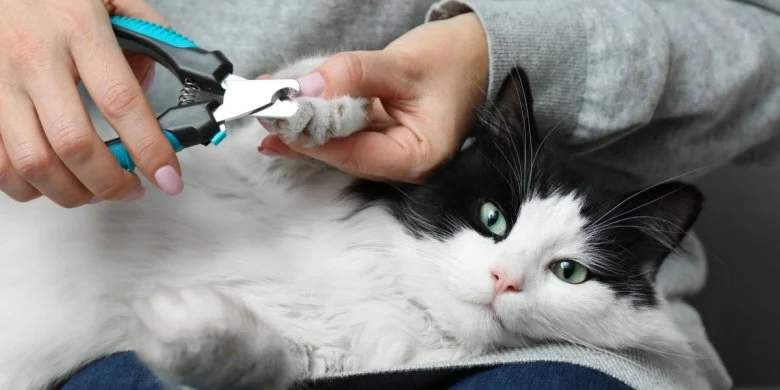
- 1. What is Declawing?
- 2. Why Declawing is Controversial
- 3. The Risks and Consequences of Declawing
- 4. Humane Alternatives to Declawing
- 5. Ethical Considerations of Declawing
- 6. Real-Life Stories: The Impact of Declawing
- 7. How to Manage Your Cat's Claws Responsibly
1. What is Declawing?
Declawing is a controversial procedure in which a cat’s claws are permanently removed. Unlike a simple nail trim, declawing is a surgical procedure that involves amputating the last bone of each toe, which includes the claw. This operation is typically performed to prevent scratching behavior in cats, but it comes with significant risks and ethical concerns.
While many pet owners may consider declawing as a solution to protect their furniture, it is important to understand that declawing is much more invasive than simply trimming a cat’s nails.

Hope For Pets
Mount WashingtonBullitt CountyKentucky
218 Red Cardinal Dr, Mt Washington, KY 40047, USA
2. Why Declawing is Controversial
Declawing is a highly debated practice within the animal care community. Critics argue that it is an unnecessary, painful, and inhumane procedure. The primary concern is that declawing is not a simple nail trim; rather, it is a form of amputation that can lead to lasting physical and psychological effects.
Many countries have already banned the procedure, including much of Europe, due to the ethical and welfare concerns it raises. In the United States, while some states have introduced bills to ban the practice, it is still legal in many regions, leading to an ongoing debate about its ethics and necessity.
3. The Risks and Consequences of Declawing
Declawing comes with a variety of potential risks and long-term consequences. These include:
- Pain and discomfort: Declawing is often performed under general anesthesia, but the recovery period can be painful for the cat. They may experience soreness, lameness, and behavioral changes.
- Behavioral issues: Cats that are declawed may become more aggressive or fearful, as their primary means of defense and communication (claws) are removed.
- Physical complications: In some cases, declawing can lead to issues with walking, arthritis, or infections. Because the procedure involves removing bones, cats may struggle to walk or jump in the same way they did before.
- Psychological trauma: Declawing can cause stress and anxiety in cats. The loss of claws may also result in a decrease in a cat’s overall well-being and independence.
These risks are important to consider, especially when looking for alternatives to this procedure. The pain, physical impairment, and emotional distress can have long-lasting effects on your cat’s health.
4. Humane Alternatives to Declawing
There are several effective alternatives to declawing that can help manage a cat's scratching behavior without causing harm. These options include:
- Regular nail trimming: Keeping your cat’s nails trimmed is one of the simplest and most effective ways to manage scratching. Regular trimming prevents nails from becoming sharp and damaging furniture.
- Scratching posts: Providing a variety of scratching posts, pads, and toys allows your cat to express its natural scratching behavior in a way that doesn’t damage your furniture.
- Soft paws: Soft paws are vinyl caps that can be applied to your cat’s claws, effectively preventing them from causing damage while allowing the cat to retain its claws.
- Behavioral training: Training your cat to use the scratching posts or rewarding them for not scratching inappropriate areas can help curb the behavior without resorting to declawing.
These alternatives are much safer and kinder to your cat, and they can help maintain your cat’s physical and emotional well-being.
5. Ethical Considerations of Declawing
Ethically, declawing raises significant concerns, particularly because it is a procedure that removes part of an animal’s body for convenience rather than necessity. The procedure is not performed for medical reasons but rather to prevent scratching, which is a natural behavior in cats.
Animal welfare organizations, veterinarians, and animal rights advocates argue that declawing should be banned because it is cruel and unnecessary. They emphasize that cats should not have to endure surgery that causes pain and potential long-term damage for the convenience of their owners.
6. Real-Life Stories: The Impact of Declawing
Many cat owners have shared their experiences with declawing, often recounting the unexpected challenges and emotional toll that it has on both the cat and the owner. One cat owner shared that after having their cat declawed, the animal became noticeably more anxious and began exhibiting signs of aggression towards other pets in the household. Another owner explained that their cat, post-declawing, began limping and developed a reluctance to walk on hard surfaces.
These real-life accounts highlight the negative consequences of declawing, reinforcing the importance of exploring alternative options to manage scratching behavior.
7. How to Manage Your Cat's Claws Responsibly
Managing your cat’s claws responsibly requires understanding their natural behavior and taking steps to redirect it without causing harm. Regularly trim your cat’s nails, provide appropriate scratching surfaces, and use positive reinforcement to encourage good behavior. If you’re struggling with scratching issues, consider consulting a veterinarian or a pet behaviorist who can offer tailored advice on managing your cat’s claws in a humane way.
By considering alternatives and understanding the ethical implications of declawing, you can ensure your cat's health and happiness without resorting to invasive procedures. For more products and expert advice on caring for your cat, visit Omnia Pet.



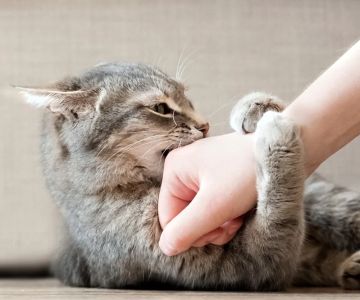
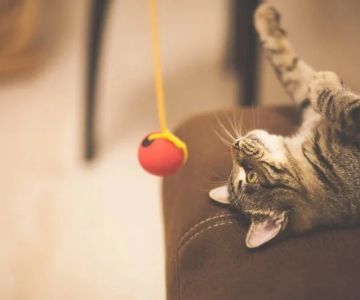


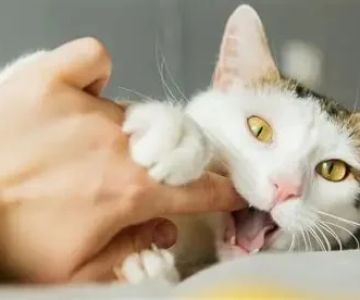
 Hollywood Feed4.0 (184 reviews)
Hollywood Feed4.0 (184 reviews) Brew Biscuits5.0 (2 reviews)
Brew Biscuits5.0 (2 reviews) All Friends Animal Hospital4.0 (446 reviews)
All Friends Animal Hospital4.0 (446 reviews) Kittylandkittens LLC0.0 (0 reviews)
Kittylandkittens LLC0.0 (0 reviews) Village Animal Clinic4.0 (212 reviews)
Village Animal Clinic4.0 (212 reviews) Rift Lake Aquatics4.0 (165 reviews)
Rift Lake Aquatics4.0 (165 reviews) Understanding Pet Insurance: What Does It Actually Cover?
Understanding Pet Insurance: What Does It Actually Cover?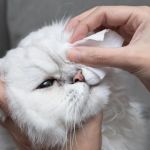 How to Keep Your Kitten's Eyes Clean and Free of Discharge
How to Keep Your Kitten's Eyes Clean and Free of Discharge The Truth About Heartworm Disease: Prevention is Cheaper Than Cure
The Truth About Heartworm Disease: Prevention is Cheaper Than Cure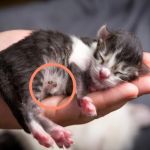 Why Is My Kitten's Belly Button Showing? | Omnia Pet
Why Is My Kitten's Belly Button Showing? | Omnia Pet Why Does My Cat Bite Me Gently? Love Bites Explained
Why Does My Cat Bite Me Gently? Love Bites Explained How to Stop Your Kitten from Getting into Cabinets
How to Stop Your Kitten from Getting into Cabinets